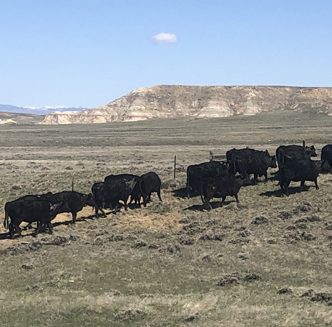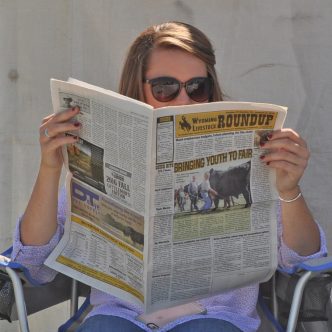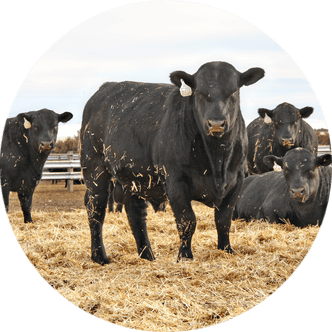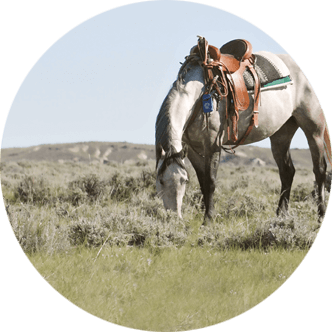Planting alfalfa: UW Extension highlights considerations for alfalfa variety and seed selection
According to data published by the U.S. Department of Agriculture’s National Agricultural Statistics Service, Wyoming farmers harvested 440,000 acres of alfalfa and alfalfa-mix hay in 2024, resulting in an estimated 1.28 million tons of dry hay production.
Ahead of this year’s planting season, University of Wyoming (UW) Extension offered a deep dive into the intricacies of Wyoming alfalfa production during the annual WESTI Ag Day, held on Feb. 12 in Worland.
During the one-day event, Washakie County Agriculture and Natural Resources Extension Educator Dan VanderPloeg discussed alfalfa variety selection and what growers should consider when planting alfalfa.
Breeding difficulties
VanderPloeg started his presentation by noting the difficulty of breeding new alfalfa varieties due to the crop’s autotetraploidy and self-incompatibility.
He explained an autotetraploid is an organism with four sets of chromosomes derived from a single parental species, which results in homologous chromosome sets.
“What this means from a practical standpoint is it’s very hard to get consistent change to the genome because we’re not having to change it once, we have to change it over many generations,” he stated. “There is so much duplication, it is really hard to change the crop in any significant amount because there are too many redundancies. Therefore, alfalfa has lagged behind other crops in terms of change in production.”
Additionally, VanderPloeg mentioned plant breeding requires a certain amount of inbreeding to develop pure lines and benefit from hybrid vigor. However, because of alfalfa’s self-incompatibility – or inability to produce viable offspring through self-pollination – it doesn’t inbreed well.
“What I’m trying to say, is it’s really hard to make gross changes to alfalfa varieties over short periods of time,” he said. “It takes a lot of time and a lot of effort to make needed changes.”
Variety selection
When choosing an alfalfa variety to plant in the field, VanderPloeg mentioned there are several factors to consider.
First, growers should consider dormancy ratings, which exist on a one-to-11 scale, with one being the most dormant and 11 being the least dormant.
Varieties with lower dormancy are more winter hardy, resulting in more fall growth, faster spring recovery and higher yield in the next year.
“But, what happens is a trade off,” VanderPloeg conceded. “If it comes back too early in the spring, it will freeze and die off, which is its own problem.”
With this in mind, he advised Wyoming growers to stay on the top end of the scale, choosing varieties in the one-to-five range.
Winter hardiness is another consideration when choosing an alfalfa variety, and while this trait used to be linked to dormancy, plant breeders have broken the relationship between the two in some varieties over the course of the last 30 years.
“Now, winter hardiness is not about dormancy as much, but more about whether or not the crop will die during the winter,” VanderPloeg said, encouraging Wyoming growers to shoot for winter hardy plants that score a one or a two on the hardiness scale.
The next thing to consider are disease and insect resistance.
VanderPloeg noted each variety will have a resistance rating, and growers should select varieties with high resistance, especially for pests or diseases they are aware of in their fields.
“A lot of times, farmers don’t know they need certain resistance until it’s a problem, so when picking a variety, having more resistance is always better than having less,” he said. “It comes down to making a decision based on your situation, your field and your application method.”
Another consideration VanderPloeg mentioned is muti-foliate expression, which refers to a variety’s tendency to produce more leaves per stem.
While this trait has often been associated with better quality due to a higher leaf-to-stem ratio, VanderPloeg noted this may not always be the case since fewer larger leaves have the potential to yield the same amount or even more tonnage than more smaller leaves.
“Some people are very invested in this, and some people are less invested in it. Still, if it’s something you’re interested in, there are varieties available with more or less leaves per stem,” he said.
For individuals who plan on grazing alfalfa fields, VanderPloeg noted there are varieties with more or less grazing tolerance as well.
“Different alfalfas are going to handle grazing differently,” he said. “It depends on where the crown sits – whether it is really high, way outside of the ground or really deep in the ground – and how well it can handle compaction.”
Although varieties offered for the 2025 planting season are not specifically labeled as grazing tolerant, VanderPloeg noted seed suppliers will have a good idea of which varieties livestock grazers should use.
Traits and technology are also things to consider when choosing an alfalfa variety.
VanderPloeg shared there are three different traits available on the market today – Roundup Ready, HarvXtra and msSUNSTRA.
Roundup Ready alfalfa is a fairly well-known variety that has been genetically modified to be resistant to glyphosate herbicides.
HarvXtra is a relatively new trait which reduces lignin content, leading to improved digestibility and potentially allowing for delayed harvests without sacrificing quality.
msSUNSTRA is a trait used to create female plants that can be crossed with male plants to achieve desired cross-pollination and higher hydrinity.
Seed selection
In addition to choosing a variety, growers must also make decisions about type and quantity of seed.
VanderPloeg noted, when buying bagged seed, it is important to calculate needed pounds per acre and evaluate germination percentage.
“When deciding how many pounds per acre you want to plant, it would be beneficial to know which fields are highly fertile and which are not,” he said. “Highly fertile pastures don’t need as much seed in the ground as the worst fields, but if you try to plant your worst field really light, you’ll run into problems.”
Growers must also decide between dormant versus hard seeds and coated versus non-coated seeds, VanderPloeg concluded.
Hannah Bugas is the managing editor of the Wyoming Livestock Roundup. Send comments on this article to roundup@wylr.net.





